iPhone 13 review: Still the iPhone for the rest of us
This year's iPhone 13 isn't revolutionary, but it will wind up as the most popular iPhone 13 model.

The new iPhone 13 in (PRODUCT)Red
In this review, we're primarily focusing on the iPhone 13 itself. For those interested in the smaller iPhone 13 mini you can check out that review and those interested in the iPhone 13 Pro or iPhone 13 Pro Max, we have a dedicated review for them as well.
Dimensions have stayed largely the same. The iPhone 12 Measured in at 5.78 inches tall, 2.82 inches wide, and 0.29 inches thick. Comparatively, iPhone 13 sticks with the same height and width, but it has increased in thickness to 0.30 inches. This isn't easy to notice, especially if you case up your iPhone.
However, some of the buttons have slightly shifted, which means that iPhone 12 cases will not fit the iPhone 13. The controls have been shifted down, making them a bit easier to hit while using the device.
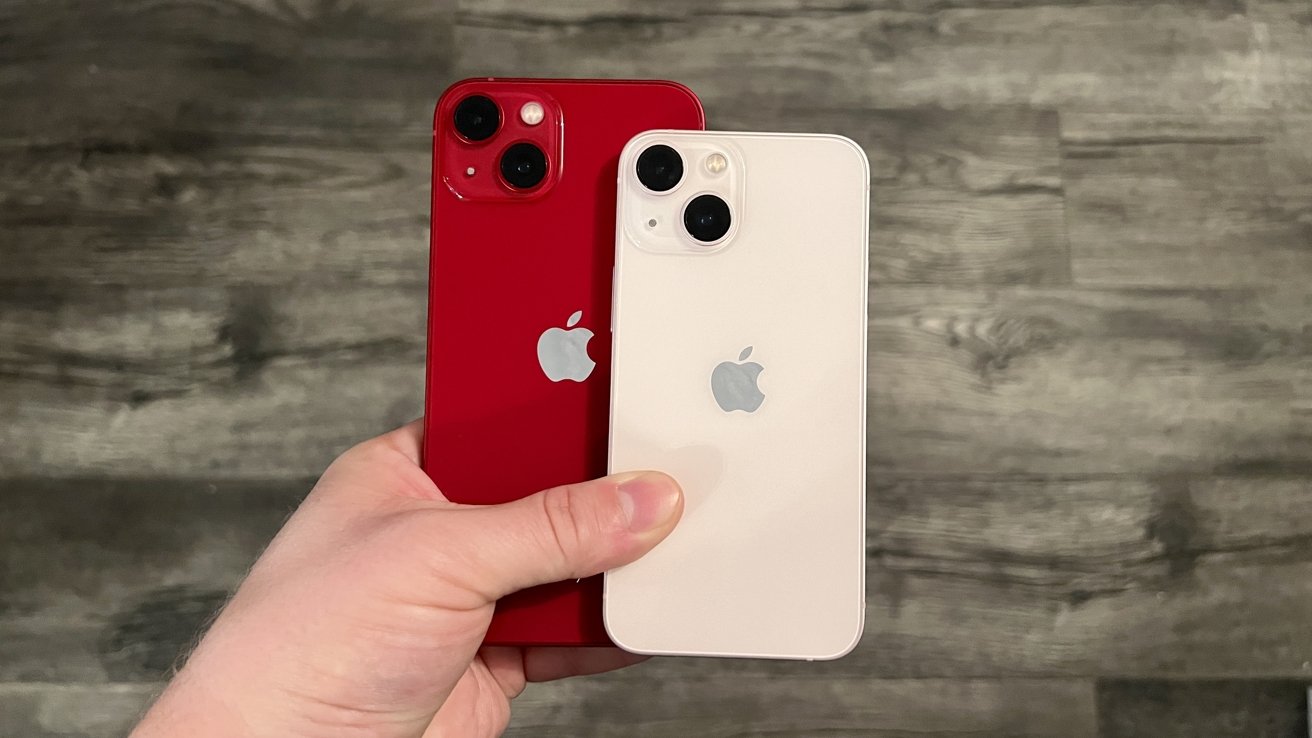
Comparing iPhone 13 to iPhone 13 mini
MagSafe support is here, which is huge this year because manufacturers have had 12 months to release compatible accessories. There are a ton of car mounts, desk mounts, wallets, chargers, and more that support it.
Though most chargers are still just magnetic Qi coils, Apple still seems to be having issues getting official MagSafe pucks to third parties. Hopefully, in the next year, we'll see more official chargers make their debut.
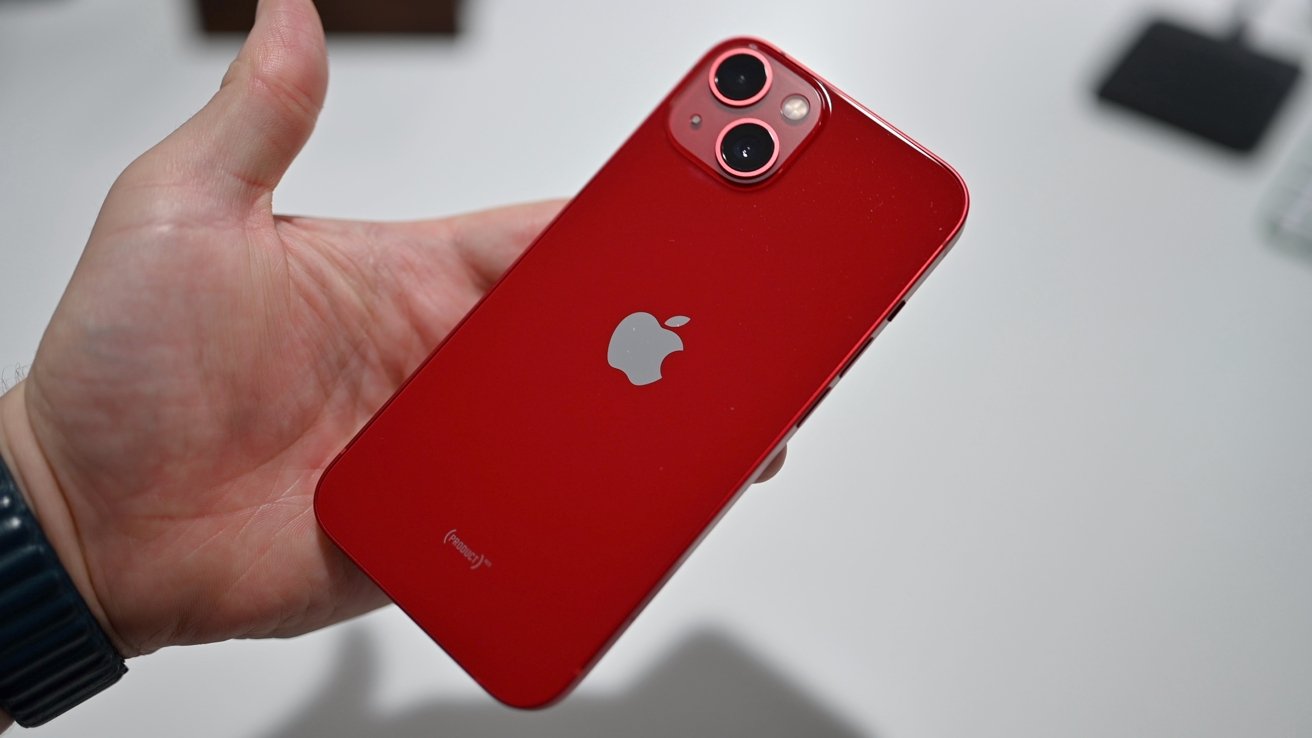
Red iPhone 13
Lighting has been retained for another year, to nobody's surprise. There's little chance Apple will be switching to Lightning any time soon, and rumors have pointed to a port-free iPhone dropping before a USB-C version does.
It supports Bluetooth 5 as well as Wi-Fi 6. We were hoping to see support for Wi-Fi 6E this year which brings support for the 6GHz spectrum, but we'll be waiting until at least until iPhone 14 for that.
5G is mildly more of a feature this year than last as networks have continued to expand, but the mmWave coverage is still paltry. On our Verizon unit, we still don't notice huge gains on 5G compared to LTE, so we find ourselves turning it off from time to time to save on battery life.
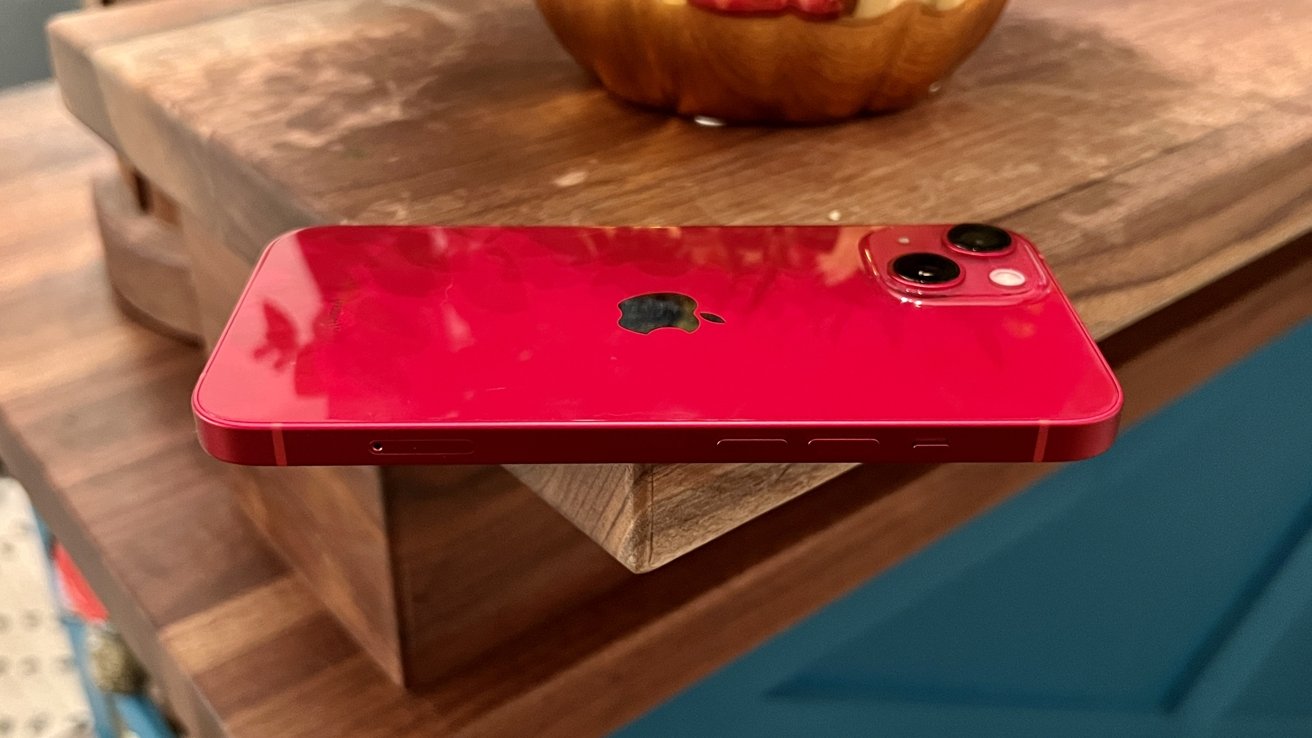
Our iPhone 13
This pattern was halted with the questionably named iPhone X introduction, skipping the iPhone 9 altogether and leading to the 11, 12, and now the iPhone 13.
The 2020 iPhone 12 got a new design, so it was no surprise to see the iPhone 13 looking nearly identical. There were some shifts to the external buttons and the SIM card tray as Apple shuffled the internals to make room for that new, larger battery.
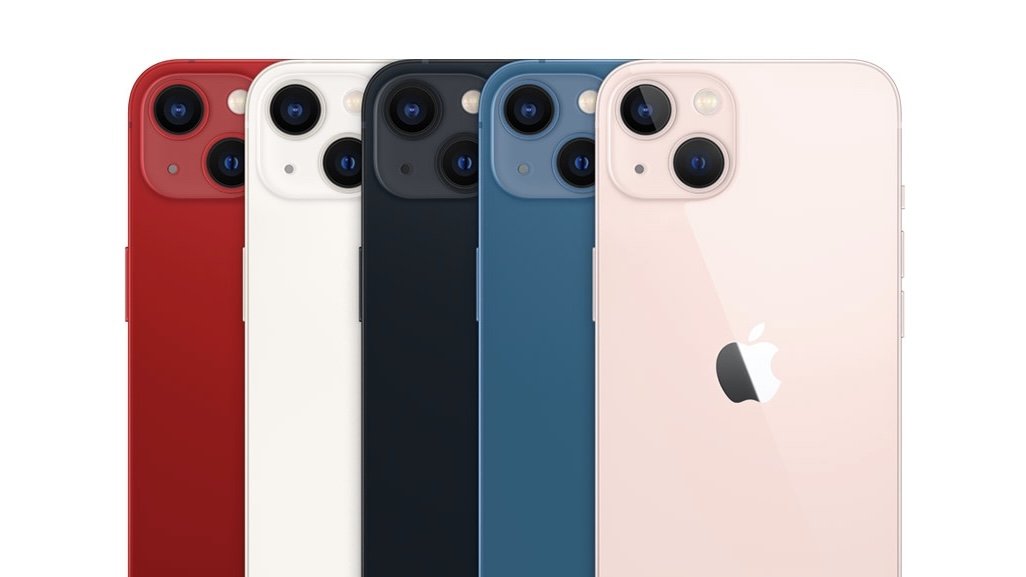
The new colors of iPhone 13
Many of the colors got tweaks on the new devices. The (PRODUCT)Red iPhone 13 model is a bit darker, Starlight is just a tiny bit more cream-colored than white, Midnight replaces black and has a highly subtle blue tint, and blue is lighter this time around. Green has been killed off, and a new lighter pink usurped the purple.
As we mentioned, "S" year devices often have a lot of focus on camera improvements, and that's true in 2021 also -- if you opt for the iPhone 13 Pro or iPhone 13 Pro Max. The camera upgrades bestowed on the iPhone 13 are far more minimal.
When playing back HDR content, all models of iPhone 13 can ramp up to 1200 nits.
Since Apple originally introduced Face ID with the iPhone X, users have asked Apple to ditch the tell-tale notch that encroaches into the top of the display. With iPhone 13, Apple made the first move in that direction by shrinking the size of the notch.
It's now not quite as wide as it was before, though it is just slightly taller. All told, it is a reduction, but a minimal one.
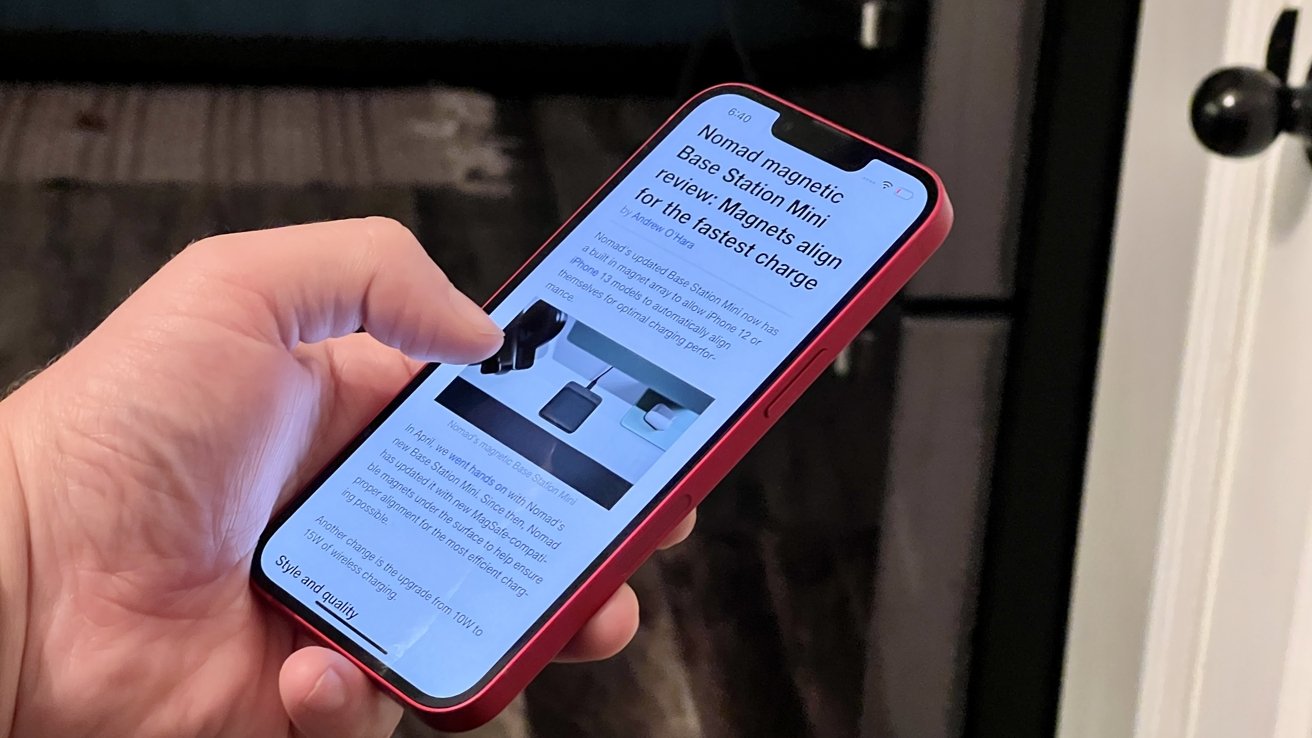
Reading Apple News on iPhone 13
There's just something that doesn't feel right about Apple touting its newly shrunken notch. It's not impressive that the notch is now slightly smaller despite its competition now opting for punch-out cameras that take up no more than a small circle.
Apple is doing more within its notch, such as the TrueDepth camera system, but the average person will not see that.
For those people, it just looks like Apple is falling behind. Samsung can create these gorgeous edge-to-edge displays with only a tiny camera hole, whereas Apple has a notch that is still relatively substantial.
After using all iPhones with Face ID, the notch never particularly bothered us. Yet, when Apple brags that it shrunk the notch, it comes off as too little too late. Plus, Apple hasn't used those millimeters for any additional information in the "ears" to either side of the notch. It's just a different size and shape for the sake of it.
There wasn't as much hoopla surrounding the A15 Bionic during Apple's keynote, leaving it to us to see how much improvement there was with the new chip.
In Geekbench 5.4.1, our iPhone 13 pulled a 1727 single-core score and a 4690 multi-core score. The Geekbench Metal graphics score was 10704. In the machine learning test, it scored a 918.
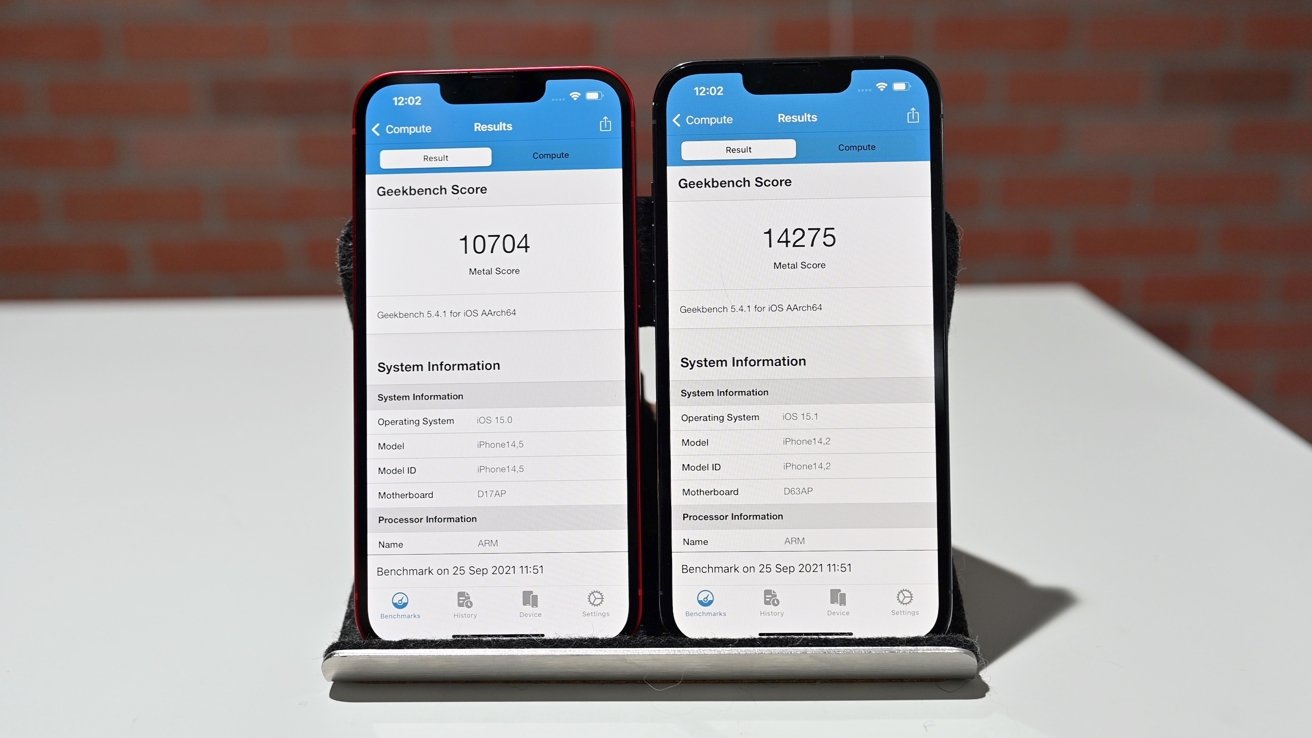
iPhone 13 vs iPhone 13 Pro Geekbench graphics benchmark
Apple has put the A15 Bionic processor in all iPhone 13 models, but the iPhone 13 Pro and iPhone 13 Pro Max both have an additional graphics core. When we compare them, we see that the iPhone 13 Pro wins out handily in the compute graphics benchmark, scoring a whopping 14725.
For daily tasks, the iPhone 13 is effectively as powerful as iPhone 13 Pro. It doesn't feel vastly quicker than our iPhone 12, but it should allow extra headroom for the next few years. It is also what drives the new camera features that we'll touch on in a few.
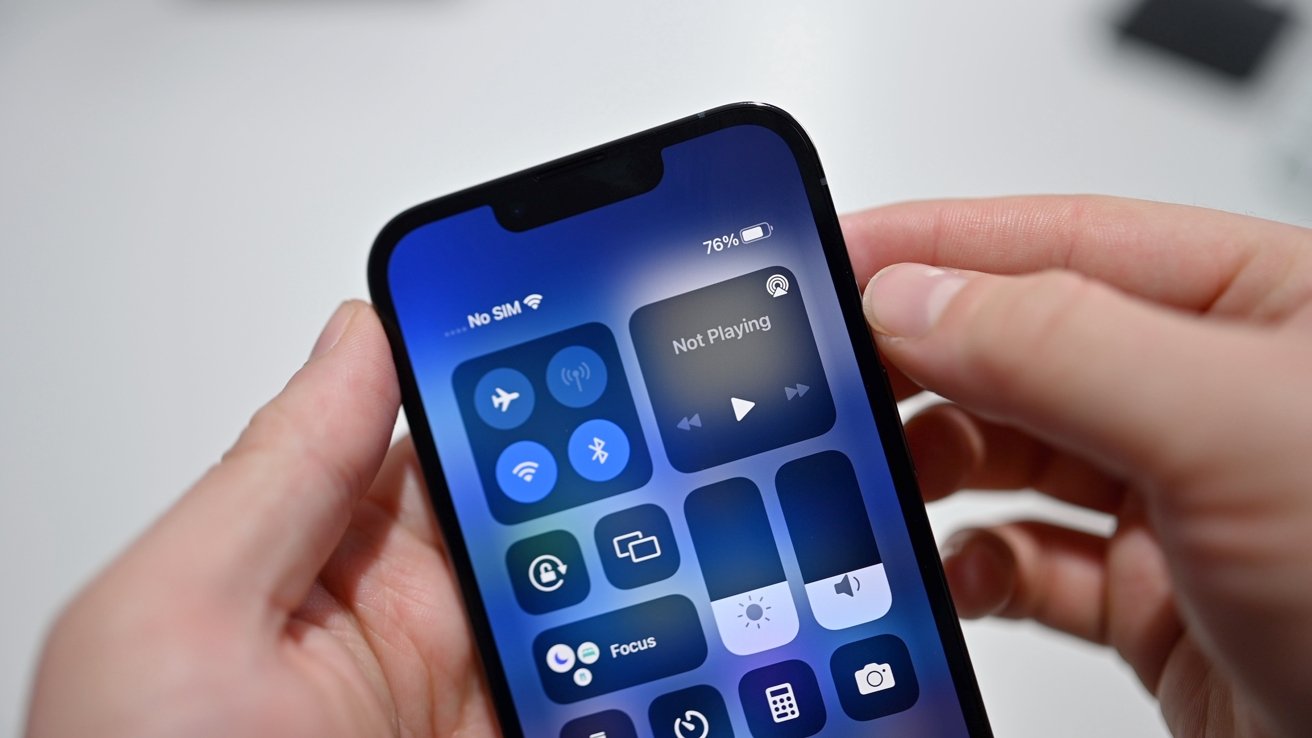
iPhone battery in Control Center
Battery life was also improved here, thanks to that A15 Bionic processor and its increased efficiency. Apple says you can get 19 hours of video playback compared to only 17 hours on the iPhone 12. Your usage will be the ultimate determinator of what you will see. Still, we can confidently say that the iPhone 13 will yield at least some extended battery use versus the corresponding iPhone 12 model.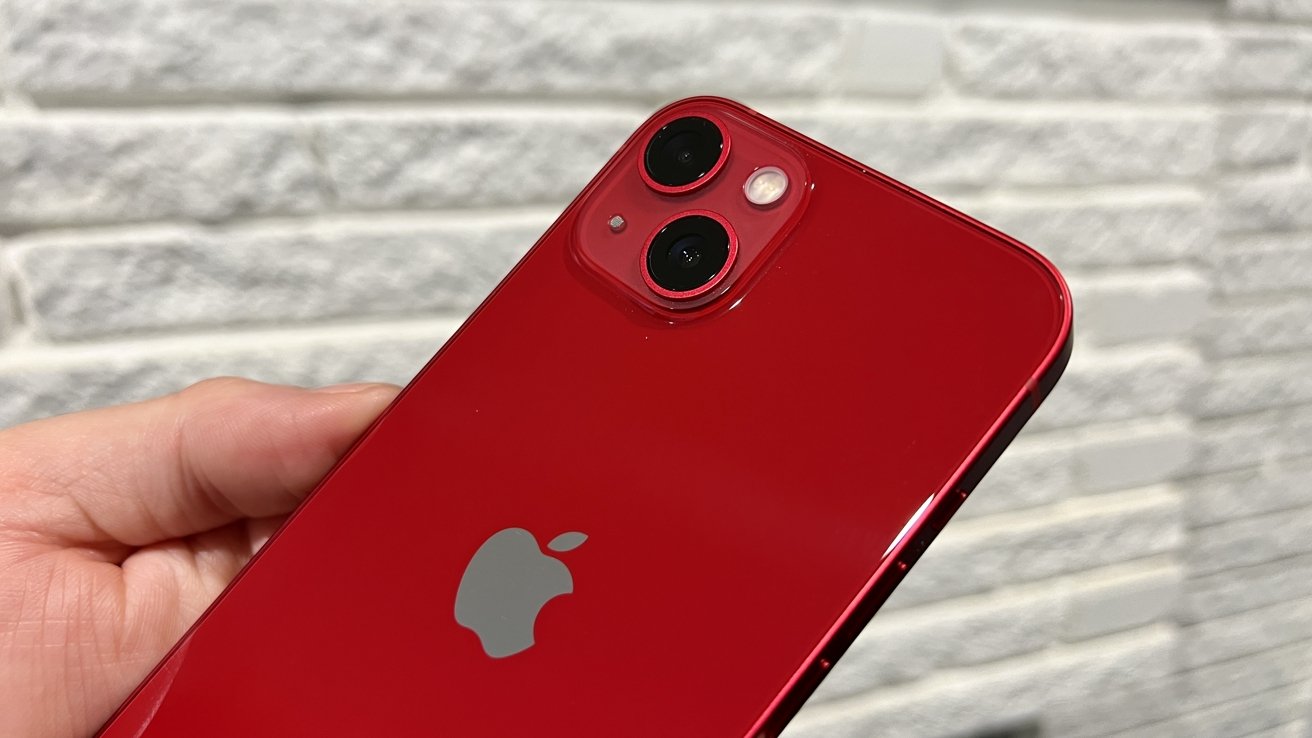
Camera bump on iPhone 13
There are nearly-identical shooters here, a 12MP wide-angle lens and a 12MP ultra-wide-angle lens. The one notable upgrade we got on the hardware is the new sensor-shift optical image stabilization (OIS). This moves the sensor rather than the lens, which should result in clearer images when moving around.
Besides no new camera hardware, Apple did introduce some new software features.
These new Photographic Styles are applied in the camera app before taking the shots and applying different adjustments to various photo parts. That differs from a filter that is applied after a photo is taken.
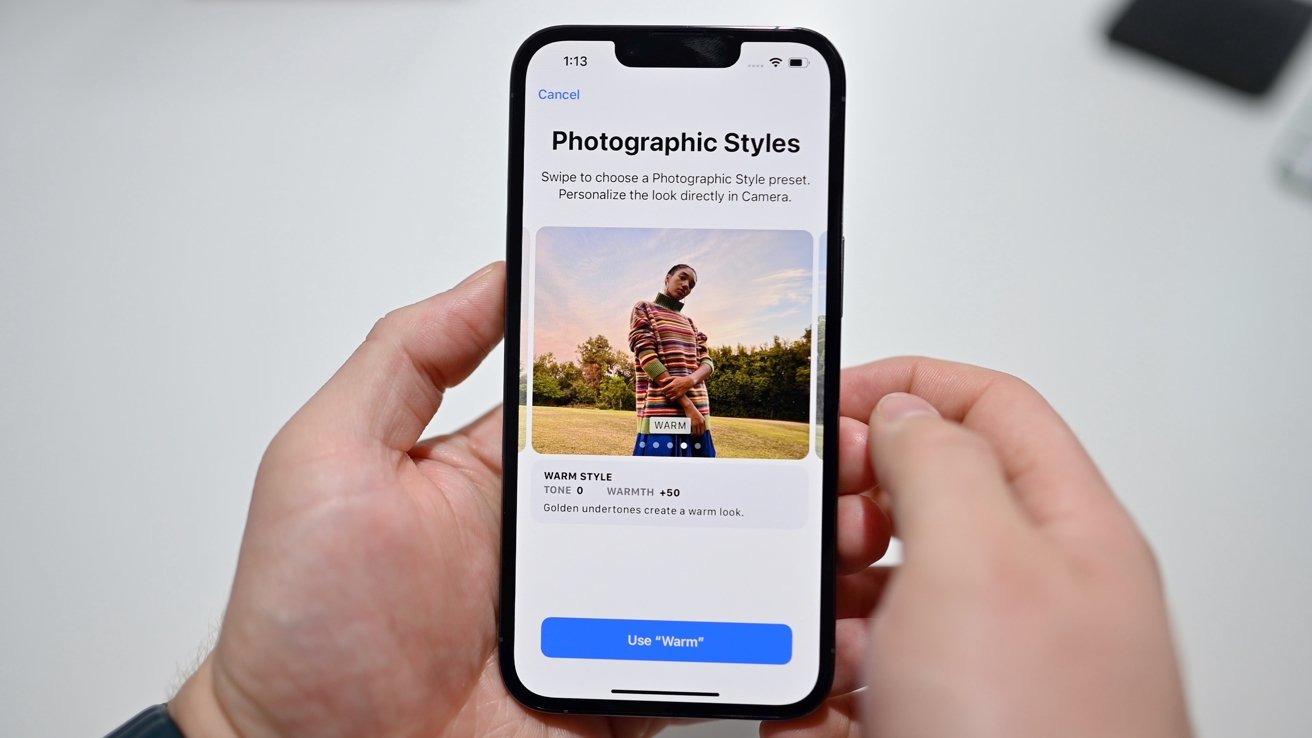
Setting Photographic Styles in Settings
New iPhone users can choose from standard, rich contrast, vibrant, cool, and warm. Beyond that, Photographic Styles can be tweaked. For example, the Rich Contrast style can have the tone and warmth settings moved up or down.
Then anything you shoot will have this style applied, resulting in a signature look coming to all your photos. Of course, this can be turned off at any given time with just a couple of taps.
As it turns out, Portrait Mode has been one of the most prominent features to come to the Camera app in years. It spawned an army of cloned effects from rival smartphone makers as well as third-party apps.
It also progressed significantly from early models. As a side note, Portrait Mode remains hit or miss with iPhone 13 and iPhone 13 mini. It lacks the LiDAR Scanner and tele lens found on the iPhone 13 Pro.
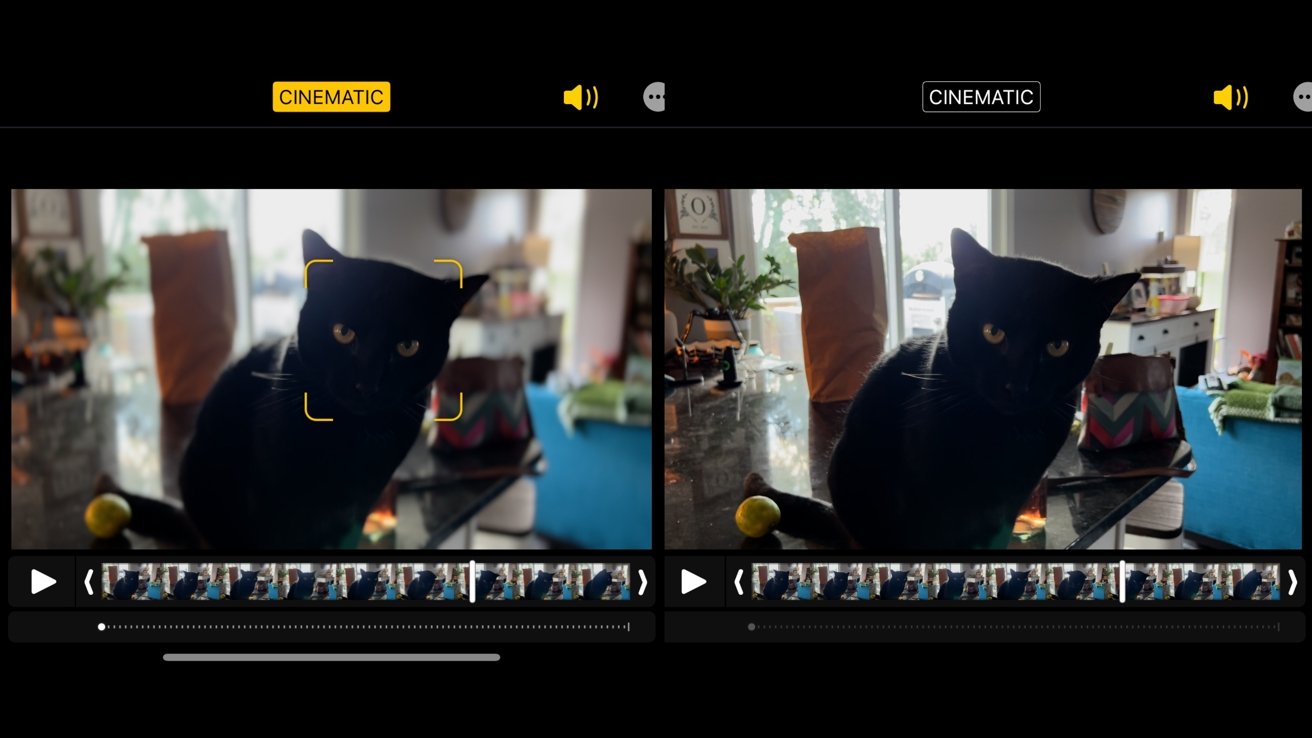
Cinematic Mode comparison
With people, it does just fine. But when you have irregular objects like food or drinks, it can struggle. The Pro model still performs a ton better. You can see a test shot on the iPhone 13 above with our jalapeno pilsner pint. It just blurred way too much.
But back to Cinematic Mode. You've undoubtedly seen reviews that have likened Cinematic Mode to the early days of Portrait Mode with its occasional issues with edge detection. They aren't wrong.
When Cinematic Mode works, it works well. Impressively well. In our testing, it seemed to work even better on animals than it did on people. Dogs, cats, and bunnies all ended up with this great-looking footage where their faces were sharp, but their bodies had a slight blur, and the background had much more bokeh.
With new phones, people want to be wowed with flashy new features. Apple saves many of those features for the "pro" models. Many people upgrading to the iPhone 13 are coming from older devices or are taking advantage of fantastic trade-in offers that are being promoted this year.
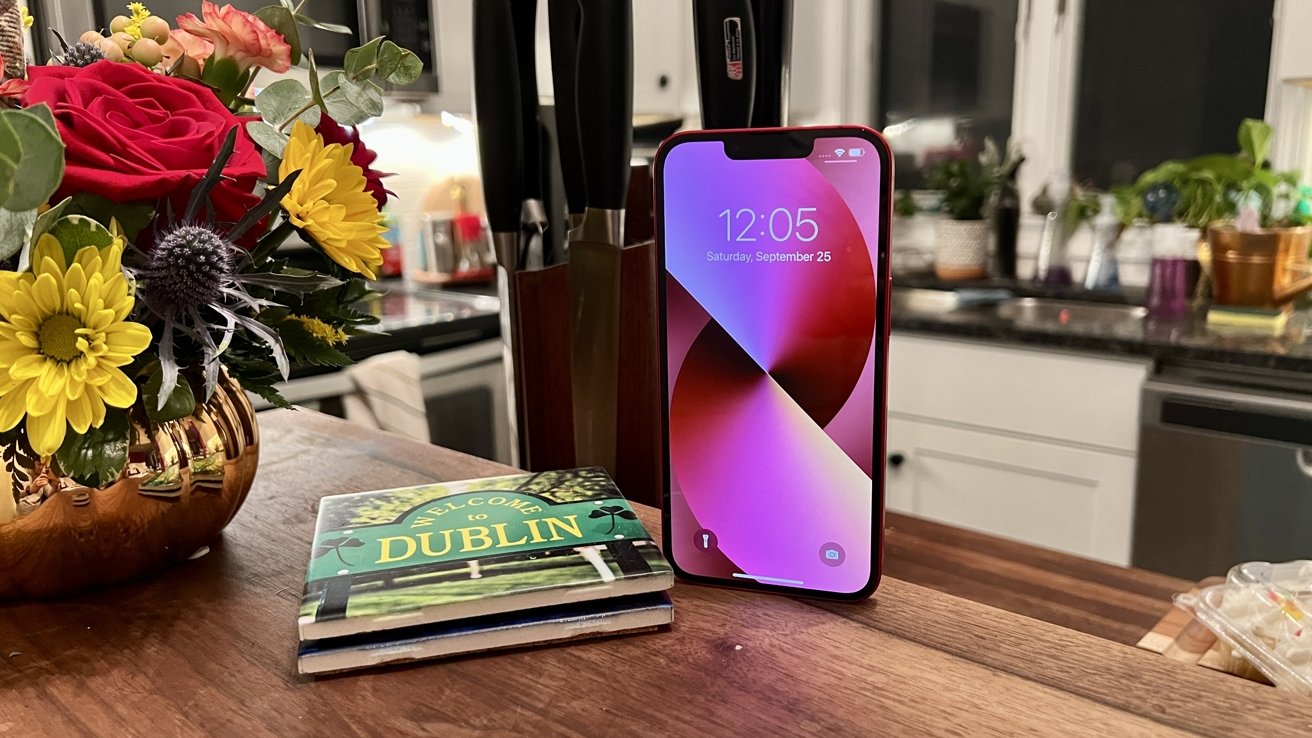
Apple's iPhone 13
For these customers, iPhone 13 is a near-perfect phone. It doesn't have every feature Apple offers, but it has the features that matter. The iPhone 13 is a fast device that takes excellent photos in the hands of the masses and even better ones for the skilled user.
This year feels like there are fewer new features to talk about and test, but it will probably still wind up being this year's most popular smartphone.
Pros
If you're ready to pick up an iPhone 13 or iPhone 13 Pro, retail prices start at $799, but the best iPhone deals regularly include wireless service discounts, trade-in promotions, and even free gift card offers.
Read on AppleInsider

The new iPhone 13 in (PRODUCT)Red
In this review, we're primarily focusing on the iPhone 13 itself. For those interested in the smaller iPhone 13 mini you can check out that review and those interested in the iPhone 13 Pro or iPhone 13 Pro Max, we have a dedicated review for them as well.
Apple's new iPhone
We picked up a base model unit in (PRODUCT)Red, which includes 128GB of storage this year. Rather than 64GB, 128GB, and 256GB intervals, The iPhone 13 now starts at 128GB and goes to 256GB and 512GB.Dimensions have stayed largely the same. The iPhone 12 Measured in at 5.78 inches tall, 2.82 inches wide, and 0.29 inches thick. Comparatively, iPhone 13 sticks with the same height and width, but it has increased in thickness to 0.30 inches. This isn't easy to notice, especially if you case up your iPhone.
However, some of the buttons have slightly shifted, which means that iPhone 12 cases will not fit the iPhone 13. The controls have been shifted down, making them a bit easier to hit while using the device.

Comparing iPhone 13 to iPhone 13 mini
MagSafe support is here, which is huge this year because manufacturers have had 12 months to release compatible accessories. There are a ton of car mounts, desk mounts, wallets, chargers, and more that support it.
Though most chargers are still just magnetic Qi coils, Apple still seems to be having issues getting official MagSafe pucks to third parties. Hopefully, in the next year, we'll see more official chargers make their debut.

Red iPhone 13
Lighting has been retained for another year, to nobody's surprise. There's little chance Apple will be switching to Lightning any time soon, and rumors have pointed to a port-free iPhone dropping before a USB-C version does.
It supports Bluetooth 5 as well as Wi-Fi 6. We were hoping to see support for Wi-Fi 6E this year which brings support for the 6GHz spectrum, but we'll be waiting until at least until iPhone 14 for that.
5G is mildly more of a feature this year than last as networks have continued to expand, but the mmWave coverage is still paltry. On our Verizon unit, we still don't notice huge gains on 5G compared to LTE, so we find ourselves turning it off from time to time to save on battery life.
Called 13, but really 12S
It's been a while now, but Apple used to have a pretty predictable pattern. One year we'd have a flagship phone with a flashy new design, followed by an "S" year that further refined the design and spotlight performance and the cameras.
Our iPhone 13
This pattern was halted with the questionably named iPhone X introduction, skipping the iPhone 9 altogether and leading to the 11, 12, and now the iPhone 13.
The 2020 iPhone 12 got a new design, so it was no surprise to see the iPhone 13 looking nearly identical. There were some shifts to the external buttons and the SIM card tray as Apple shuffled the internals to make room for that new, larger battery.

The new colors of iPhone 13
Many of the colors got tweaks on the new devices. The (PRODUCT)Red iPhone 13 model is a bit darker, Starlight is just a tiny bit more cream-colored than white, Midnight replaces black and has a highly subtle blue tint, and blue is lighter this time around. Green has been killed off, and a new lighter pink usurped the purple.
As we mentioned, "S" year devices often have a lot of focus on camera improvements, and that's true in 2021 also -- if you opt for the iPhone 13 Pro or iPhone 13 Pro Max. The camera upgrades bestowed on the iPhone 13 are far more minimal.
A new display, sort of
The iPhone 13 is still equipped with a 6.1-inch Super Retina XDR OLED display with a pixel density of 460 PPI and a resolution of 2532-by-1170. From last year, the only change in the display itself is upgrading the brightness from 625 nits to 800 nits, which the iPhone 12 Pro had a year ago. This year, iPhone 13 Pro now goes up to 1000 nits.When playing back HDR content, all models of iPhone 13 can ramp up to 1200 nits.
Since Apple originally introduced Face ID with the iPhone X, users have asked Apple to ditch the tell-tale notch that encroaches into the top of the display. With iPhone 13, Apple made the first move in that direction by shrinking the size of the notch.
It's now not quite as wide as it was before, though it is just slightly taller. All told, it is a reduction, but a minimal one.

Reading Apple News on iPhone 13
There's just something that doesn't feel right about Apple touting its newly shrunken notch. It's not impressive that the notch is now slightly smaller despite its competition now opting for punch-out cameras that take up no more than a small circle.
Apple is doing more within its notch, such as the TrueDepth camera system, but the average person will not see that.
For those people, it just looks like Apple is falling behind. Samsung can create these gorgeous edge-to-edge displays with only a tiny camera hole, whereas Apple has a notch that is still relatively substantial.
After using all iPhones with Face ID, the notch never particularly bothered us. Yet, when Apple brags that it shrunk the notch, it comes off as too little too late. Plus, Apple hasn't used those millimeters for any additional information in the "ears" to either side of the notch. It's just a different size and shape for the sake of it.
The A15 Bionic processor is here
Apple's next-generation custom iPhone silicon is the A15 Bionic processor. Like the A14 it follows, it is a six-core chip with two high-performance cores and four high-efficiency cores.There wasn't as much hoopla surrounding the A15 Bionic during Apple's keynote, leaving it to us to see how much improvement there was with the new chip.
In Geekbench 5.4.1, our iPhone 13 pulled a 1727 single-core score and a 4690 multi-core score. The Geekbench Metal graphics score was 10704. In the machine learning test, it scored a 918.

iPhone 13 vs iPhone 13 Pro Geekbench graphics benchmark
Apple has put the A15 Bionic processor in all iPhone 13 models, but the iPhone 13 Pro and iPhone 13 Pro Max both have an additional graphics core. When we compare them, we see that the iPhone 13 Pro wins out handily in the compute graphics benchmark, scoring a whopping 14725.
For daily tasks, the iPhone 13 is effectively as powerful as iPhone 13 Pro. It doesn't feel vastly quicker than our iPhone 12, but it should allow extra headroom for the next few years. It is also what drives the new camera features that we'll touch on in a few.

iPhone battery in Control Center
Battery life was also improved here, thanks to that A15 Bionic processor and its increased efficiency. Apple says you can get 19 hours of video playback compared to only 17 hours on the iPhone 12. Your usage will be the ultimate determinator of what you will see. Still, we can confidently say that the iPhone 13 will yield at least some extended battery use versus the corresponding iPhone 12 model.
Cameras -- solid, but unexciting

Camera bump on iPhone 13
There are nearly-identical shooters here, a 12MP wide-angle lens and a 12MP ultra-wide-angle lens. The one notable upgrade we got on the hardware is the new sensor-shift optical image stabilization (OIS). This moves the sensor rather than the lens, which should result in clearer images when moving around.
Besides no new camera hardware, Apple did introduce some new software features.
Photographic Styles for your own signature look
One of our favorite new features is photographic styles. Many pro photographers have their own style and LUTs that they apply to many of their images. When they take photos, you can tell it was one of theirs between the look, angle, and applied editing.These new Photographic Styles are applied in the camera app before taking the shots and applying different adjustments to various photo parts. That differs from a filter that is applied after a photo is taken.

Setting Photographic Styles in Settings
New iPhone users can choose from standard, rich contrast, vibrant, cool, and warm. Beyond that, Photographic Styles can be tweaked. For example, the Rich Contrast style can have the tone and warmth settings moved up or down.
Then anything you shoot will have this style applied, resulting in a signature look coming to all your photos. Of course, this can be turned off at any given time with just a couple of taps.
Cinematic Mode has endless potential
When Apple introduced Portrait Mode, there was the ever-present Internet drama about it. We've heard the debates on whether it waters down natural photography, looked too fake, didn't perform well, and whether anyone would even use it.As it turns out, Portrait Mode has been one of the most prominent features to come to the Camera app in years. It spawned an army of cloned effects from rival smartphone makers as well as third-party apps.
It also progressed significantly from early models. As a side note, Portrait Mode remains hit or miss with iPhone 13 and iPhone 13 mini. It lacks the LiDAR Scanner and tele lens found on the iPhone 13 Pro.

Cinematic Mode comparison
With people, it does just fine. But when you have irregular objects like food or drinks, it can struggle. The Pro model still performs a ton better. You can see a test shot on the iPhone 13 above with our jalapeno pilsner pint. It just blurred way too much.
But back to Cinematic Mode. You've undoubtedly seen reviews that have likened Cinematic Mode to the early days of Portrait Mode with its occasional issues with edge detection. They aren't wrong.
When Cinematic Mode works, it works well. Impressively well. In our testing, it seemed to work even better on animals than it did on people. Dogs, cats, and bunnies all ended up with this great-looking footage where their faces were sharp, but their bodies had a slight blur, and the background had much more bokeh.
Should you buy the iPhone 13?
We don't want to harp on Apple for "not being innovative enough." It's a sentiment shared all too often in iPhone reviews in particular.With new phones, people want to be wowed with flashy new features. Apple saves many of those features for the "pro" models. Many people upgrading to the iPhone 13 are coming from older devices or are taking advantage of fantastic trade-in offers that are being promoted this year.

Apple's iPhone 13
For these customers, iPhone 13 is a near-perfect phone. It doesn't have every feature Apple offers, but it has the features that matter. The iPhone 13 is a fast device that takes excellent photos in the hands of the masses and even better ones for the skilled user.
This year feels like there are fewer new features to talk about and test, but it will probably still wind up being this year's most popular smartphone.
Pros
- Storage capacities doubled
- A15 Bionic processor still has notable performance upgrades
- Battery life is better
- Notch is somewhat smaller
- Photographic Styles are a great new feature for the camera
- Cinematic Mode has a lot of potential
- MagSafe is more useful than ever
- Still sleek design but with new colors
- Dual eSIM support
- Minimal camera upgrades
- Last-gen cases won't fit
- Performance gains aren't as big as years past
- No Wi-Fi 6E
- Price increase from iPhone 12
Rating: 4.5 out of 5
Where to buy
Apple's iPhone 13 and iPhone 13 Pro are available at Amazon and Expercom, along with wireless carriers, including AT&T and Verizon.If you're ready to pick up an iPhone 13 or iPhone 13 Pro, retail prices start at $799, but the best iPhone deals regularly include wireless service discounts, trade-in promotions, and even free gift card offers.
Read on AppleInsider

Comments
"This year's iPhone 13 isn't revolutionary, but it will wind up as the most popular iPhone 13 model."
Also this line is incorrect:
"There's little chance Apple will be switching to Lightning any time soon"
I think you meant "switching FROM Lightening."
if you want small get a 13 mini
But in this space, instead of a 13 do you save money and get a 12?
is the 13 worth the higher price than a 12 as much as the 13 mini does over a 12 mini?
So while i thank you for teh review, comparison with the 12 (what is the improvement in geekbench for example, but all the rest too) would have made it complete.